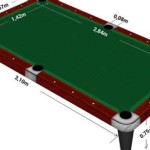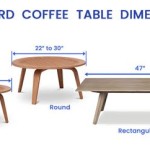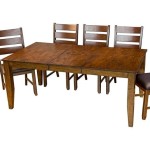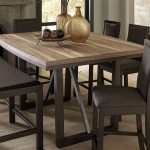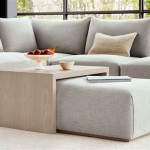The Importance of a Comfortable Chair for the Home Office
In the contemporary work landscape, the home office has evolved from a temporary solution to a permanent fixture for many professionals. As such, the significance of a well-designed and ergonomic workspace cannot be overstated. Among the essential components of a productive home office, the chair stands out as a critical element directly impacting physical well-being, focus, and overall job satisfaction. Selecting a comfortable chair is not merely a matter of personal preference; it is a crucial investment in health, productivity, and long-term career success.
Prolonged periods of sitting, a hallmark of modern office work, can exert considerable stress on the musculoskeletal system. Poor posture, inadequate support, and uncomfortable seating arrangements can contribute to a range of health issues, including back pain, neck stiffness, carpal tunnel syndrome, and even circulatory problems. These ailments not only diminish overall health but also significantly impair concentration and work performance. A comfortable and ergonomically sound chair, on the other hand, provides the necessary support to maintain proper posture, reduce strain on the body, and promote a more comfortable and productive work experience.
The market offers a diverse array of office chairs, each with its unique features, materials, and design philosophies. Navigating this landscape requires careful consideration of individual needs, preferences, and the specific demands of the work environment. Factors such as adjustable features, lumbar support, material breathability, and overall durability play a significant role in determining the suitability of a chair for a particular individual and work setting. Making an informed decision regarding chair selection is therefore paramount to maximizing comfort, minimizing health risks, and optimizing productivity in the home office.
Prioritizing Ergonomic Design Features
Ergonomics, the science of designing workplaces and equipment to fit the human body, is a cornerstone of comfortable and productive office seating. An ergonomically designed chair prioritizes adjustability, support, and proper posture alignment to minimize strain and maximize comfort during prolonged sitting. Key ergonomic features to consider include:
Lumbar Support: The lumbar region of the spine, located in the lower back, is particularly susceptible to strain during prolonged sitting. A chair with adjustable lumbar support allows the user to customize the level of support provided to this critical area. Proper lumbar support helps maintain the natural curvature of the spine, reducing pressure on the discs and muscles in the lower back. Look for chairs with adjustable height and depth lumbar support to ensure a personalized fit that adequately supports the individual's unique spinal alignment.
Adjustable Seat Height: The ability to adjust the seat height is essential for maintaining proper posture and reducing strain on the legs and feet. The ideal seat height allows the user to sit with their feet flat on the floor and their knees bent at a 90-degree angle. This posture promotes healthy circulation and reduces pressure on the joints. Chairs with pneumatic seat height adjustment mechanisms offer effortless and precise control over seat height, allowing users to quickly and easily find the optimal sitting position.
Adjustable Armrests: Armrests play a crucial role in supporting the arms and shoulders, reducing strain on the neck and upper back. Adjustable armrests allow the user to customize the height, width, and angle of the armrests to achieve a comfortable and supportive position. Proper armrest positioning ensures that the shoulders are relaxed and the elbows are supported, preventing slouching and reducing the risk of developing neck and shoulder pain.
Seat Depth and Tilt: The depth of the seat pan and the ability to adjust the seat tilt are also important considerations. Adequate seat depth ensures that the user's thighs are properly supported without putting pressure on the back of the knees. Adjustable seat tilt allows the user to slightly recline the seat, which can help reduce pressure on the lower back and promote a more relaxed posture. A chair with these features provides greater customization and allows the user to fine-tune the chair to their individual needs and preferences.
Headrest: While not always considered essential, a headrest can provide valuable support for the neck and head, particularly during periods of prolonged computer use. A headrest can help prevent neck strain and fatigue by supporting the weight of the head and encouraging proper neck alignment. Look for chairs with adjustable height and angle headrests to ensure a comfortable and supportive fit.
Material Considerations: Breathability and Durability
The materials used in the construction of an office chair significantly impact its comfort, durability, and breathability. Selecting materials that are both comfortable and durable is essential for ensuring long-term satisfaction and maximizing the investment in the chair.
Fabric Options: Fabric-covered chairs offer a wide range of aesthetic options and can be more comfortable for some users. Breathable fabrics, such as mesh or perforated materials, promote air circulation and help prevent overheating during prolonged sitting. Durable fabrics, such as high-quality polyester or nylon blends, can withstand daily wear and tear and resist stains. When selecting a fabric chair, consider the climate in which it will be used, the level of activity in the workspace, and the desired aesthetic.
Leather and Leather Alternatives: Leather chairs offer a luxurious look and feel and are often perceived as being more durable. However, leather can be less breathable than fabric, potentially leading to discomfort in warmer climates. Leather alternatives, such as polyurethane (PU) leather, offer a similar aesthetic at a lower price point but may not be as durable as genuine leather. When considering leather or leather alternatives, factor in the breathability of the material, the ease of cleaning, and the long-term durability.
Mesh Backs: Mesh-backed chairs have become increasingly popular due to their excellent breathability and supportive qualities. The mesh material allows for optimal air circulation, keeping the user cool and comfortable even during extended periods of sitting. High-quality mesh materials are also durable and can provide excellent lumbar support. When selecting a mesh-backed chair, ensure that the mesh is taut and supportive and that the frame is sturdy and well-constructed.
Frame Materials: The frame of the chair provides the foundation for its stability and durability. Common frame materials include steel, aluminum, and plastic. Steel frames are known for their strength and durability, while aluminum frames are lighter and more resistant to corrosion. Plastic frames can be more affordable but may not be as durable as metal frames. When selecting a chair, consider the weight capacity of the frame and the overall quality of the construction.
Matching the Chair to Work Style and Task
The ideal office chair is not a one-size-fits-all solution. The specific features and design elements that are most important will vary depending on the individual's work style, the tasks they perform, and the overall work environment. Matching the chair to the specific needs of the work environment is crucial for maximizing comfort, productivity, and long-term health.
Task Chairs: Task chairs are designed for general office work and provide a balance of comfort, support, and adjustability. These chairs typically feature adjustable seat height, lumbar support, and armrests, making them suitable for a wide range of tasks. Task chairs are a versatile option for home offices used for a variety of different types of work.
Executive Chairs: Executive chairs are designed for comfort and style, often featuring high backs, plush cushioning, and 고급스러운 materials. These chairs are typically used in executive offices and conference rooms and are designed to provide a comfortable and supportive experience during long meetings and periods of intense concentration. However, some executive chairs may prioritize aesthetics over ergonomics and may not be the best choice for individuals who prioritize long-term health and comfort.
Drafting Chairs: Drafting chairs are designed for use with standing desks or drafting tables. These chairs typically feature an elevated seat height and a footrest, allowing users to comfortably work at a higher surface. Drafting chairs are also often equipped with adjustable backrests and armrests, providing the necessary support for prolonged periods of standing or semi-standing work.
Gaming Chairs: Gaming chairs have gained popularity in recent years due to their ergonomic design and comfortable features. These chairs typically feature high backs, adjustable lumbar support, and headrests, providing excellent support for the spine and neck. Gaming chairs are also often equipped with adjustable armrests and recline functions, allowing users to customize the chair to their individual needs and preferences. While initially designed for gamers, gaming chairs can also be a comfortable and supportive option for home office use.
In conclusion, selecting a comfortable chair for the home office is a critical investment in health, productivity, and overall well-being. By prioritizing ergonomic design features, considering material options, and matching the chair to the specific work style and tasks performed, individuals can create a more comfortable, supportive, and productive work environment.

Coolhut Ergonomic Office Chair Comfort Home Task Lumbar Support Mesh Desk With Flip Up Arms 300lbs Black Size 26 8

Office Chair Mesh Computer Ergonomic Desk Mid Back Task With Arms Gray

The 4 Best Office Chairs For 2024 Reviews By Wirecutter

Most Comfortable Desk Chair Office Chairs For Home 360 Swivel Adjustable Height With Gold Metal Base Beige The Pop

Home Office Chair Velvet Ergonomic Computer Comfy Desk Ebay

Big And Tall Office Chair 400lbs With Wide Seat Arms 160 Reclining Footrest Comfortable Executive Desk High Back Computer Home Newegg Com

Home Office Chair Ergonomic Desk Mesh Most Comfortable Computer Best Adjustable Height Seat 360 Swivel Gaming Armless Black

Huimo Home Swivel Office Chair Adjustable Height With Wheels Modern Linen Fabric Upholstered Comfortable Armless Computer Desk

Most Comfortable Desk Chair Office Chairs For Home 360 Swivel Adjustable Height With Gold Metal Base Green The Pop

Ergonomic Massaging Vibrating Pu Leather Home Office Swivel Desk Rocking Chair 1 Unit Smith S Food And Drug


